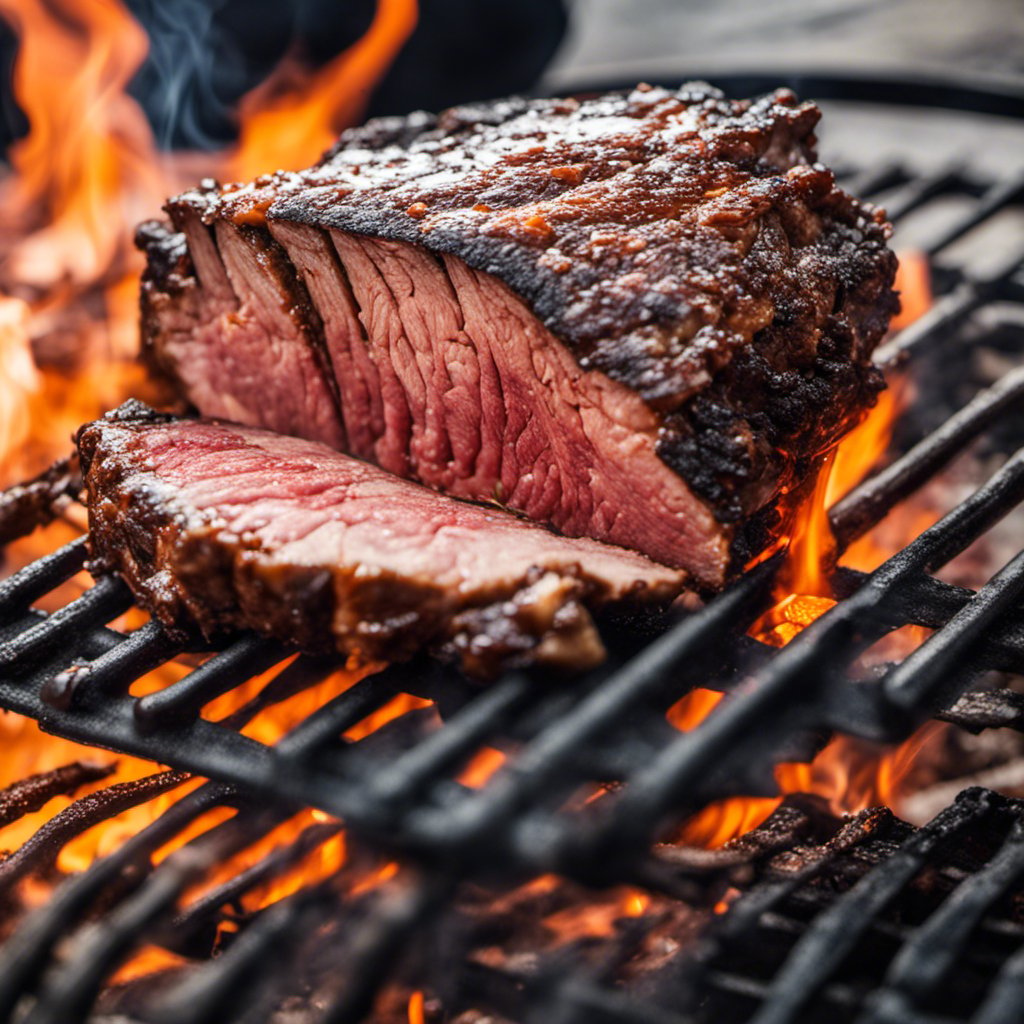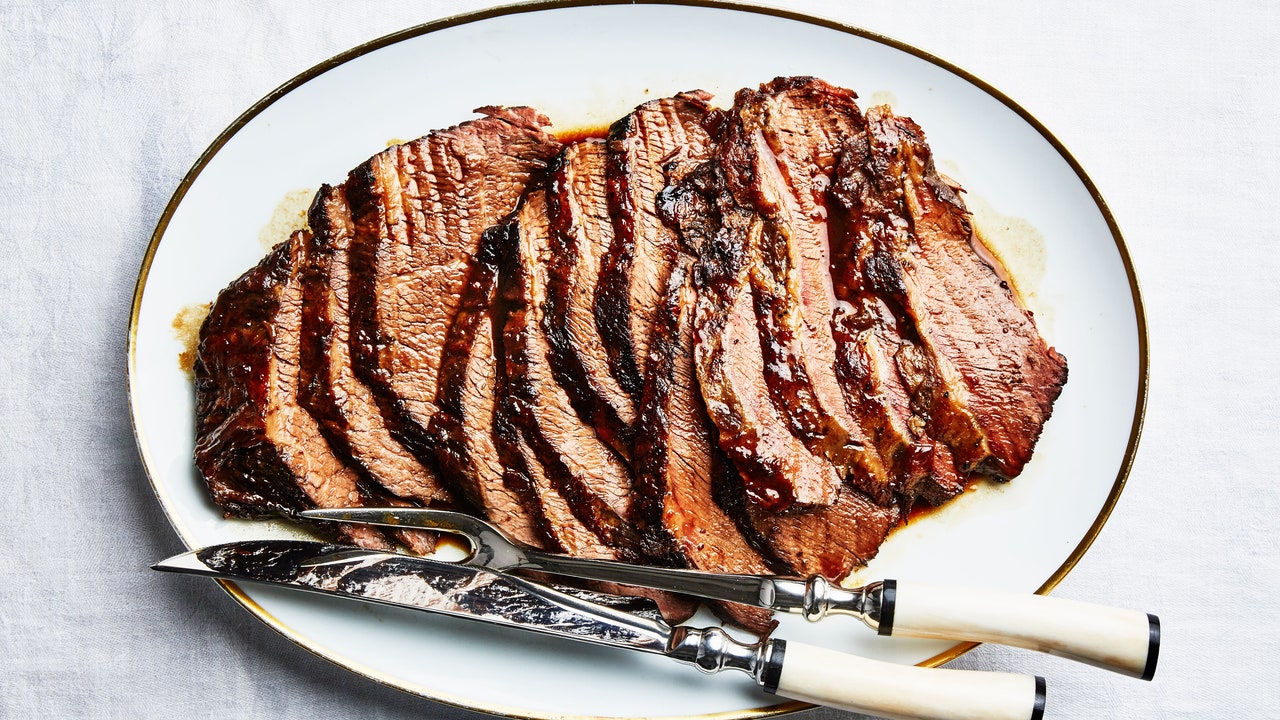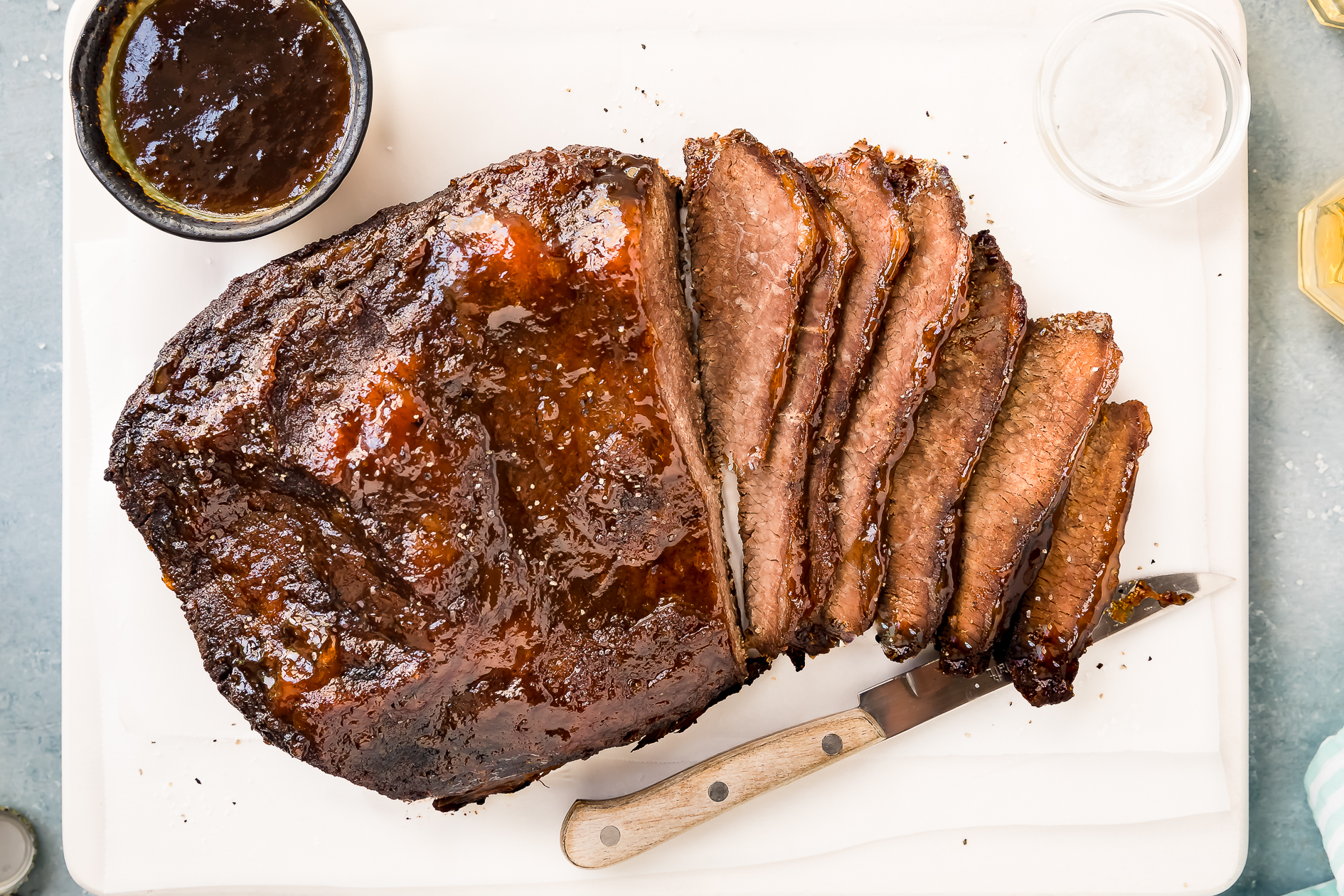
Introduction
Overview Of The Problem: Why Is My Brisket Tough?
Brisket, a popular cut of meat, is known for its tenderness when cooked correctly. However, achieving that perfect tenderness can be quite challenging. Many factors contribute to a tough brisket, including the presence of connective tissue and the cooking method used. Understanding these causes can help you identify and address them accordingly.
Explanation Of The Importance Of Tender Brisket
Tender brisket is highly desired as it provides a more enjoyable eating experience. Tough brisket can be stringy, chewy, and difficult to cut, which can greatly impact the overall enjoyment of a meal. When brisket is cooked to perfection, it becomes moist, juicy, and tender, making it a flavorful and satisfying dish.
Now, let’s delve deeper into the causes of tough brisket and how to overcome them.
Connective Tissue
One significant cause of tough brisket is the presence of connective tissue, which comprises collagen and elastin. This connective tissue is a natural part of the meat and is responsible for the meat’s structure. However, if not cooked correctly, this connective tissue can become problematic, resulting in a tough and chewy brisket. The connective tissue needs to break down during the cooking process to achieve that desirable tenderness.
To ensure the connective tissue breaks down properly, a slow and low cooking method, such as smoking or braising, is recommended. These methods allow for a longer cooking time, which helps melt the collagen and elastin, transforming the tough connective tissue into gelatin. The gelatin adds moisture and tenderness to the meat, resulting in a more succulent and flavorful brisket.
By understanding the causes of tough brisket, particularly the presence of connective tissue, you can take the necessary steps to achieve that perfect tenderness. Through proper cooking techniques and patience, you can transform a tough brisket into a melt-in-your-mouth delicacy.
Understanding Brisket
Anatomy Of A Brisket: Point And Flat
Brisket is a popular cut of meat that consists of two primary components: the point (or deckle) and the flat. These components are separated by a layer of fat. Here’s a breakdown of each part:
- Point (or Deckle): This is the thicker cut of brisket that is attached directly to the rib cage. It contains dense meat and larger chunks of fat. The point is known for its rich flavor and juiciness.
- Flat: The flat is a leaner cut of brisket that has some fat but is mostly comprised of meat and connective tissue. It is prized for its tenderness and is often used for slicing or serving as whole slices.
Sometimes, brisket is sold with only the flat portion, as it is easier to handle and prepare. However, the point is highly sought after by barbecue enthusiasts for its unbeatable combination of flavor and tenderness.
Different Types Of Briskets And Their Characteristics
While there aren’t different types of brisket per se, the point and flat offer different characteristics when it comes to cooking:
- Point: The point, with its marbled fat and thicker meat, is well-suited for low and slow cooking methods like smoking or braising. This cut benefits from the longer cooking time, allowing the fat to render and the connective tissue to break down, resulting in a moist and succulent texture.
- Flat: The flat, being leaner, is often preferred for slicing thinly and serving as individual portions. It can be cooked using various methods such as roasting, grilling, or even braising, but may require more attention to prevent it from drying out.
Understanding the different cuts of brisket empowers you to make informed decisions based on your preferences and desired cooking outcomes. Whether you choose the point or the flat, proper cooking techniques and patience are key to achieving that tender and flavorful brisket. So, the next time you’re cooking brisket, consider the anatomy and characteristics of each cut to optimize your culinary experience.
Factors Contributing To Tough Brisket
Possible Reasons For Tough Brisket: Bad Cut, Improper Cooking Temperature, Insufficient Resting Time
Brisket, a popular cut of meat, can sometimes turn out tough instead of tender and juicy. Several factors can contribute to this less-than-desired outcome. Understanding these factors can help you troubleshoot and improve your brisket cooking skills.
Here are a few possible reasons why your brisket turned out tough:
- Bad Cut: The quality of the brisket will greatly impact its tenderness. Choose a well-marbled cut with good fat distribution for optimal results. A trimmed brisket, particularly the flat portion, may lack the necessary fat to keep the meat moist and tender.
- Improper Cooking Temperature: Temperature control is crucial when smoking or cooking brisket. If the temperature is too high, the meat can dry out and become tough. On the other hand, if the temperature is too low, the connective tissues may not break down fully, resulting in a firm texture. Maintain a consistent and ideal cooking temperature to achieve a tender brisket.
- Insufficient Resting Time: Resting the cooked brisket allows the juices to redistribute throughout the meat, ensuring a moist and tender result. If you slice the brisket immediately after cooking, the juices may not have had enough time to settle, leading to a tougher texture. It is recommended to let the brisket rest for at least 30 minutes before slicing and serving.
To summarize, factors such as the quality of the cut, cooking temperature, and resting time can all contribute to a tough brisket. By selecting a good cut, monitoring the cooking temperature, and allowing the brisket to rest adequately, you can improve your chances of achieving a tender and flavorful result. Happy cooking!

Tenderizing Techniques
Braising
Braising is considered one of the most effective methods to make tough brisket tender again. This technique involves slow cooking the brisket in a liquid to break down the tough connective tissues and collagen, resulting in a tender and flavorful meat.
Marinating
Marinating is another great technique to tenderize brisket. By soaking the brisket in a flavorful marinade, the acids and enzymes present in the marinade help break down the tough fibers of the meat, resulting in a more tender and flavorful outcome.
Explanation Of The Technique And Its Effectiveness In Tenderizing Brisket
When braising brisket, the slow cooking process allows the liquid to penetrate the meat and break down the tough connective tissues. The collagen in the meat is converted into gelatin, creating a more tender texture. The low and slow cooking method also helps to retain moisture in the meat, preventing it from becoming dry and tough.
Benefits Of Marinating And Recommended Marinade Recipes
Marinating is a versatile technique that not only tenderizes the brisket but also enhances its flavor. The acids in the marinade can help break down the tough fibers and make the meat more tender. Additionally, the flavors from the marinade can infuse into the meat, resulting in a more flavorful and delicious brisket.
Here are a few recommended marinade recipes for tenderizing brisket:
| Marinade | Ingredients |
|---|---|
| Texas BBQ Marinade | – Worcestershire sauce – Apple cider vinegar – Brown sugar- Garlic powder- Onion powder- Liquid smoke- Salt and pepper |
| Asian-Inspired Marinade | – Soy sauce- Rice vinegar- Sesame oil- Ginger- Garlic- Honey- Lime juice |
| Mexican-Inspired Marinade | – Lime juice- Orange juice- Cumin- Chili powder- Garlic- Cilantro- Salt and pepper |
Marinate the brisket for at least 4 hours or overnight for best results. Before cooking, make sure to pat the brisket dry and discard the marinade.
Using techniques like braising and marinating can greatly improve the tenderness of your brisket. Experiment with different flavors and cooking methods to find your preferred way of making a tough brisket tender again. Happy cooking!
Slow Smoking Method
Benefits Of Slow Smoking Brisket For Tenderness
The slow smoking method, cooking the brisket at a low temperature of around 225-275 degrees Fahrenheit, offers numerous benefits in terms of tenderness. The extended cooking time allows for the rendering of fat and the breakdown of tough connective tissues. This results in a tender and juicy brisket that melts in your mouth.
Tips And Guidelines For Achieving Juicy And Tender Results
When using the slow smoking method for brisket, it is important to follow these tips and guidelines:
- Prepare the brisket by trimming excess fat and applying a dry rub to enhance flavor.
- Preheat the smoker to the desired temperature and maintain a consistent heat throughout the cooking process.
- Use a reliable meat thermometer to monitor the internal temperature of the brisket. This will ensure that it is cooked to perfection.
- Allow enough time for the brisket to smoke slowly, as this will allow the fat to render and the connective tissues to break down. The general rule of thumb is to cook the brisket for about 1 hour per pound.
- Consider using a water pan in the smoker to help maintain moisture and create a more favorable cooking environment.
- Wrap the brisket in foil or butcher paper during the later stages of cooking to help retain moisture.
- Once the brisket reaches an internal temperature of around 200 degrees Fahrenheit, remove it from the smoker and let it rest for at least 30 minutes before slicing. This resting period allows the juices to redistribute within the meat.
Following these tips and guidelines will help you achieve a tender and juicy smoked brisket that will impress your family and friends. Experiment with different flavors and techniques, and enjoy the process of creating a delicious meal that everyone will love.
Resting And Slicing
Importance Of Resting The Brisket Before Slicing
Resting the brisket before slicing is a crucial step in achieving a tender and juicy final result. When the brisket is cooked, the proteins in the meat tighten and the juices redistribute throughout. Allowing the brisket to rest for at least 30 minutes after cooking allows the proteins to relax and the juices to redistribute back into the meat. This results in a more tender and flavorful brisket.
During the resting period, it is important to keep the brisket covered to retain heat and moisture. You can use foil or butcher paper to wrap the brisket and place it in a warm area. This additional time also gives you a chance to prepare any accompanying dishes or sides.
Proper Slicing Techniques For Optimal Tenderness
In addition to resting the brisket, the way you slice the meat can also greatly impact its tenderness. Here are some tips for proper slicing techniques:
- Use a sharp carving knife: A sharp knife will make clean cuts through the brisket, preventing any tearing or shredding of the meat.
- Slice against the grain: The grain refers to the direction of the muscle fibers in the brisket. Slicing against the grain means cutting perpendicular to these fibers, which helps to break up the meat and make it more tender.
- Thin, even slices: Aim for slices that are about a quarter-inch thick. Thinner slices allow for easier chewing and ensure each bite is tender and flavorful.
- Slice as needed: It’s best to slice the brisket just before serving to maintain its juiciness. If you slice the entire brisket in advance, it may dry out before being consumed.
By following these resting and slicing techniques, you can ensure that your brisket turns out tender and juicy every time. Remember to take the time to properly rest the meat and slice it against the grain for optimal results. Enjoy your perfectly cooked brisket with family and friends!

Troubleshooting Tough Brisket
Common Mistakes To Avoid When Cooking Brisket
When it comes to cooking brisket, there are some common mistakes that can result in a tough and chewy final product. Here are a few things to avoid to ensure your brisket comes out tender and juicy:
- Undercooking: One of the main reasons for tough brisket is undercooking. Brisket needs to be cooked low and slow, usually between 225°F and 250°F, for a long period of time. This allows the connective tissues to break down and the fat to render, resulting in a tender and flavorful brisket.
- Cooking at the wrong temperature: Controlling the temperature while cooking brisket is crucial. If the temperature is too high, the meat can become tough and dry. If it’s too low, it can take longer to cook and result in an undercooked brisket. It’s important to use a reliable meat thermometer to ensure the brisket is cooked to the desired internal temperature.
- Not allowing the brisket to rest: Resting the brisket after it’s cooked is an essential step in achieving a tender result. When the brisket is cooked, the proteins in the meat tighten and the juices redistribute throughout. Allowing the brisket to rest for at least 30 minutes before slicing allows the proteins to relax and the juices to redistribute back into the meat, resulting in a more tender and flavorful brisket.
Tips For Adjusting Cooking Time And Temperature
If you find yourself with a tough brisket, there are a few things you can do to salvage it:
- Increase the cooking time: If your brisket is tough, it may just need more time to cook. You can try lowering the temperature slightly and cooking it for an additional hour or two until it becomes tender. Keep in mind that cooking times can vary depending on the size of the brisket, so it’s important to rely on internal temperature rather than time alone.
- Use a braising liquid: Another way to tenderize a tough brisket is to cook it in a braising liquid. This can be a flavorful broth or a mixture of broth, wine, or beer. The liquid helps to break down the connective tissues and keep the meat moist during cooking.
- Consider using a slow cooker or pressure cooker: If you’re short on time, using a slow cooker or pressure cooker can help tenderize even the toughest brisket. These appliances allow for longer, slower cooking times, which can help break down the tough fibers in the meat.
By avoiding common mistakes and making adjustments to cooking time and temperature as needed, you can troubleshoot a tough brisket and still enjoy a delicious and tender final product. Remember to be patient and allow the brisket to rest before slicing for the best results.
Expert Tips For Juicy Brisket
Insights From Professional Pitmasters On Achieving Perfectly Tender Brisket
When it comes to cooking brisket, the expertise of professional pitmasters can provide valuable insights to help you achieve a tender and juicy final product. Here are some expert tips to consider:
- Seasoning: Properly seasoning your brisket is key to enhancing its flavor. Pitmasters recommend using a simple rub consisting of salt, pepper, and other spices or herbs of your choice. It’s important to generously apply the rub and let it sit on the meat for at least a few hours, or overnight, to allow the flavors to penetrate.
- Cooking methods: Pitmasters often swear by the low and slow cooking method for brisket. This involves cooking the meat at a temperature between 225°F and 250°F for an extended period of time. This slow cooking allows the connective tissues to break down, resulting in a tender brisket. Some pitmasters also recommend using a combination of smoking and braising to achieve optimal tenderness.
- Temperature control: Consistent temperature control throughout the cooking process is crucial for a juicy brisket. Pitmasters emphasize the importance of using a reliable meat thermometer to monitor the internal temperature of the meat. This ensures that the brisket is cooked to the desired doneness without becoming tough or dry.
Expert Advice On Seasoning, Cooking Methods, And Temperature Control
To further perfect your brisket-cooking skills, here are additional expert tips on seasoning, cooking methods, and temperature control:
- Seasoning: Experimenting with different seasonings and flavor profiles can add excitement to your brisket. Pitmasters suggest trying combinations of spices, herbs, or even injecting the brisket with marinades or sauces for added flavor.
- Cooking methods: Besides the traditional smoking method, pitmasters recommend trying alternative cooking methods such as sous vide or reverse searing. These techniques can help achieve a tender and juicy brisket by allowing for precise temperature control and gradual cooking.
- Temperature control: Pitmasters emphasize the importance of maintaining a consistent temperature throughout the cooking process. This can be achieved by using a well-insulated smoker or grill and regularly monitoring the temperature. Some pitmasters even suggest using a water pan or misting the brisket with a liquid during cooking to help keep it moist.
By incorporating these expert tips into your brisket-cooking routine, you can elevate your skills and consistently produce juicy and tender brisket that everyone will enjoy. Remember, practice makes perfect, so don’t be afraid to experiment and adjust your methods to find what works best for you.
Expert Tips For Juicy Brisket
Insights From Professional Pitmasters On Achieving Perfectly Tender Brisket
When it comes to cooking brisket, the expertise of professional pitmasters can provide valuable insights to help you achieve a tender and juicy final product. Here are some expert tips to consider:
- Seasoning: Properly seasoning your brisket is key to enhancing its flavor. Pitmasters recommend using a simple rub consisting of salt, pepper, and other spices or herbs of your choice. It’s important to generously apply the rub and let it sit on the meat for at least a few hours, or overnight, to allow the flavors to penetrate.
- Cooking methods: Pitmasters often swear by the low and slow cooking method for brisket. This involves cooking the meat at a temperature between 225°F and 250°F for an extended period of time. This slow cooking allows the connective tissues to break down, resulting in a tender brisket. Some pitmasters also recommend using a combination of smoking and braising to achieve optimal tenderness.
- Temperature control: Consistent temperature control throughout the cooking process is crucial for a juicy brisket. Pitmasters emphasize the importance of using a reliable meat thermometer to monitor the internal temperature of the meat. This ensures that the brisket is cooked to the desired doneness without becoming tough or dry.
Expert Advice On Seasoning, Cooking Methods, And Temperature Control
To further perfect your brisket-cooking skills, here are additional expert tips on seasoning, cooking methods, and temperature control:
- Seasoning: Experimenting with different seasonings and flavor profiles can add excitement to your brisket. Pitmasters suggest trying combinations of spices, herbs, or even injecting the brisket with marinades or sauces for added flavor.
- Cooking methods: Besides the traditional smoking method, pitmasters recommend trying alternative cooking methods such as sous vide or reverse searing. These techniques can help achieve a tender and juicy brisket by allowing for precise temperature control and gradual cooking.
- Temperature control: Pitmasters emphasize the importance of maintaining a consistent temperature throughout the cooking process. This can be achieved by using a well-insulated smoker or grill and regularly monitoring the temperature. Some pitmasters even suggest using a water pan or misting the brisket with a liquid during cooking to help keep it moist.
Conclusion
Recap Of The Main Points Discussed
To achieve a tender and juicy brisket, it is important to consider proper seasoning, cooking methods, and temperature control. Generously apply a rub to enhance the flavor and let it sit on the meat for a few hours. Utilize the low and slow cooking method, using a combination of smoking and braising if desired. Maintain consistent temperature control and use a reliable meat thermometer to ensure the brisket is cooked to the desired doneness.
Encouragement To Experiment And Improve Brisket Cooking Skills
To elevate your brisket-cooking skills, don’t be afraid to experiment with different seasonings, cooking methods, and temperature control techniques. Try injecting marinades or sauces for additional flavor, explore alternative cooking methods like sous vide or reverse searing, and find the perfect balance of temperature and cooking time. With practice and experimentation, you can consistently produce juicy and tender brisket that will impress family and friends.
Frequently Asked Questions – Why is My Brisket Tough? Tenderizing Troubleshooting
Q: Why is my brisket tough?
A: There are several reasons why brisket can turn out tough. It could be due to undercooking, overcooking, poor quality meat, or insufficient tenderizing.
Q: How do I know if my brisket is undercooked?
A: Undercooked brisket will be tough and chewy. If you can’t easily shred or slice the meat, it is likely undercooked.
Q: What can cause overcooking of brisket?
A: Overcooking can result from high cooking temperatures, leaving the brisket in the oven or smoker for too long, or not monitoring the internal temperature properly.
Q: How can I prevent overcooking my brisket?
A: To prevent overcooking, invest in a reliable meat thermometer to monitor the internal temperature. Remove the brisket from the heat source when it reaches the desired doneness.
Q: Does the quality of the meat affect tenderness?
A: Yes, it does. The quality of the brisket you choose plays a significant role in its tenderness. Look for a well-marbled brisket with a good fat cap, as this will contribute to a juicier and more tender end result.
Q: How can I tenderize a tough brisket?
A: One of the best methods for tenderizing tough brisket is through low and slow cooking. Braising is another effective technique where the brisket is cooked in liquid at low heat for an extended period. You can also try marinating the meat overnight or using a tenderizing marinade.
Q: Are there any specific cooking techniques to make my brisket tender?
A: Yes, there are a few techniques you can try. Wrapping the brisket in foil during the cooking process, known as the “Texas crutch,” can help retain moisture and tenderness. You can also use a slow cooker or pressure cooker for a more tender outcome.
Q: How long should I let my brisket rest before slicing?
A: Resting the cooked brisket is crucial for retaining moisture and tenderness. Wrap the brisket in foil and let it rest for at least 30 minutes, but up to an hour is ideal. This allows the juices to redistribute and the meat to relax, resulting in a more tender texture.
Q: Can I salvage a tough brisket after it has been cooked?
A: While it may be challenging to salvage an already tough brisket, you can try slicing it thinly against the grain to make it easier to chew. Another option is to shred the meat and use it in dishes like tacos or sandwiches where tenderness may be less noticeable.
Q: How can I prevent tough brisket in the future?
A: To prevent tough brisket, follow proper cooking techniques such as using a meat thermometer, choosing a good-quality brisket, and allowing it to rest after cooking. Experiment with different tenderizing methods until you find the one that works best for you.
Remember, cooking brisket to tender perfection requires practice and patience. Don’t be discouraged by a few missteps—keep experimenting and refining your techniques to achieve the tender and flavorful brisket you desire.

We are family-owned and operated. We love to serve coffee to our community that loves to drink it! We opened in December 2017 and are always expanding and evolving. We strive to offer a relaxing and comfortable gathering place for our customers. We not only serve delicious coffee but a full breakfast and lunch menu as well. You can also order ONLINE through our website or call ahead and pick it up right at our drive-thru window! We have a wide range of delicious baked goods, sweet treats, and a gift shop coming soon! Stop in and let us serve you!!